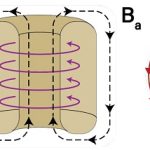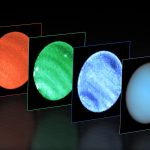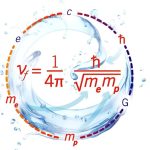Scientists use special radios to search for dark matter’s missing pieces
For a long time, scientists have known that dark matter exists in our universe.
They've seen its effects on other things in space, but they...
Alice rings: A quantum wonderland where magnetic particles change identity
Scientists have made a groundbreaking discovery that feels like something out of "Alice in Wonderland."
They have found something called an "Alice ring," which proves...
Scientists detect new component of radio halo in a galaxy cluster
Imagine a cluster of galaxies as a jigsaw puzzle, but not just any puzzle. It's one of those 1,000-piece challenges where every piece is...
Scientists create magic fermionic quantum processor
Quantum computers are cutting-edge machines that can solve problems much faster than regular computers.
Now, a team of scientists from Austria and the U.S. have...
One of Neptune’s dark spots finally seen from earth
There’s no getting around it: our Solar System’s gas giants all have big, conspicuous spots on their faces.
These include Jupiter’s Great Red Spot, Saturn’s...
How the way water flows in a cup could help us understand the universe...
Have you ever wondered what makes life possible on Earth, or how the universe works?
A group of scientists from Queen Mary University of London...
Supercharged light-based computers could make our phones as smart as supercomputers
Imagine your smartphone running programs that currently only supercomputers can handle, and doing it all while using much less energy!
Scientists at MIT have made...
NASA’s Webb telescope unravels the mystery of a dying star
NASA's James Webb Space Telescope has given us a new, detailed look at the Ring Nebula, a dying star's colorful farewell 2,200 light-years away...
How a 350-year-old idea helps us understand light better
For hundreds of years, scientists have been trying to figure out what light is really made of.
Is it a wave that flows like water...
Strange metals may revolutionize quantum computing, shows study
For nearly four decades, scientists have been scratching their heads over materials called 'strange metals.'
These weird metals don't follow the usual rules of how...










